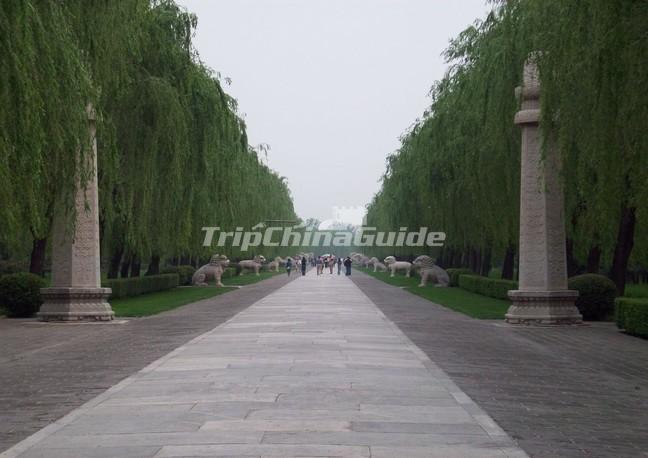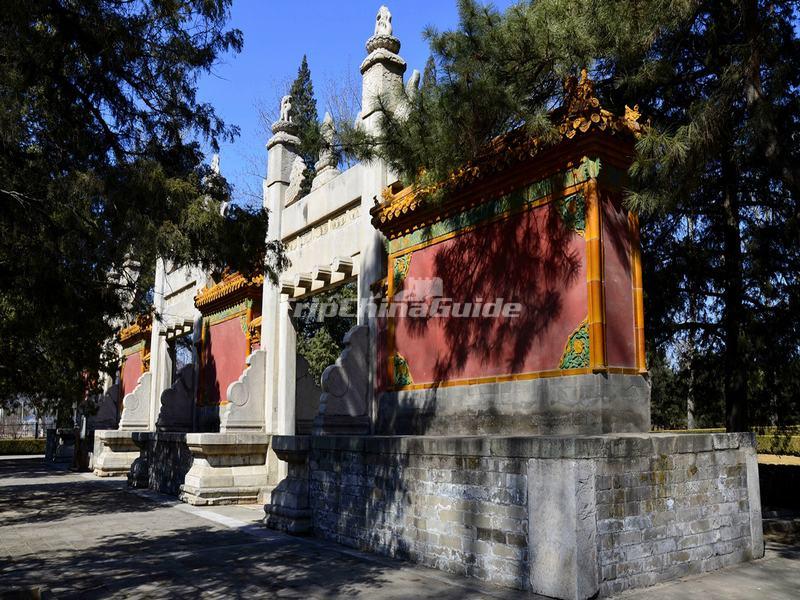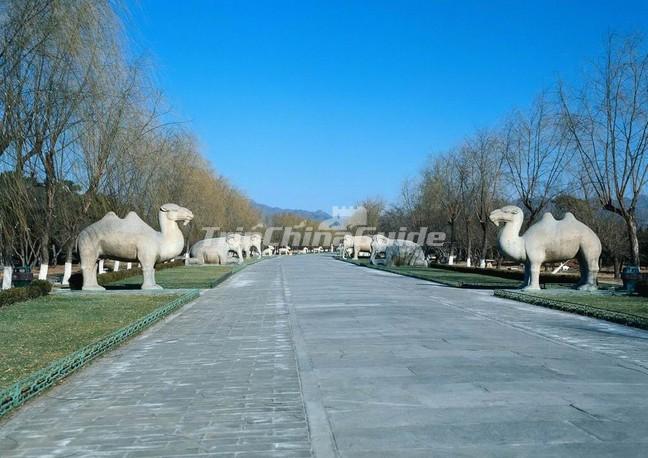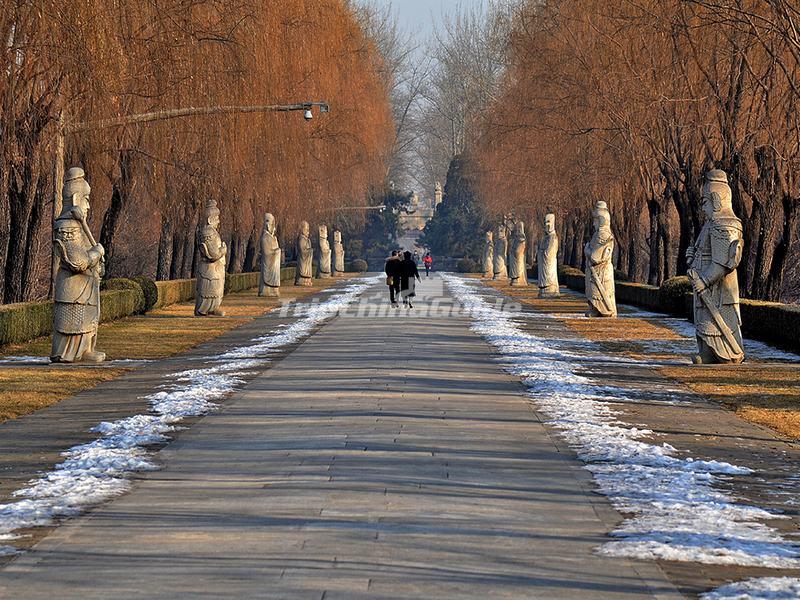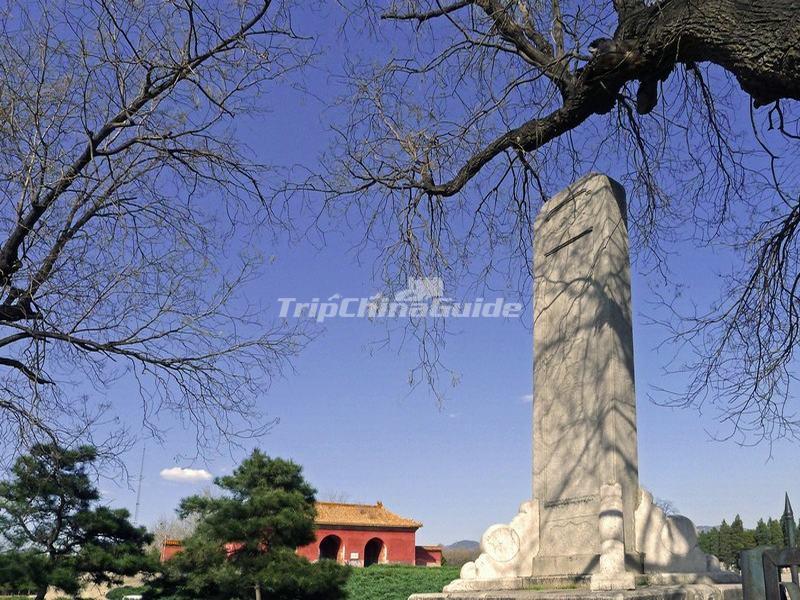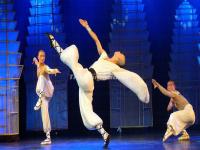Sacred Way
A Sacred Way is always found in an imperial cemetery in China. The sacred way of the Thirteen Ming Tombs is 7 kilometers long from the Memorial Stone Archway to the gate of Changling Tomb. It was built for Changling Tomb, Emperor Zhu Di's tomb, but since the other 12 tombs were also built in this area, the Sacred Way became the main passage for all the thirteen tombs. Although they were from one group, each tomb is independent. Along the sacred way are Marble Archway, Great Gate, Tablet Tower, Stone Statues, Dragon and Phoenix Gate, and the Gate of Changling Tomb.
The Sacred Way starts from the Marble Archway. It is memorial stone archway made of white marble. It was built for promoting the meritorious and virtuous deeds of the feudal rulers. It has 5 arches supported by 6 marble pillars, with 11 towers on the top. As the starting point, Marble Archway is a symbol of the tomb area.
The Great Palace Gate is the main entrance to the tomb area, also known as the Bing Red Gate. The gate has three passageways: the central passage way was for the deceased emperor only, the living emperor and his ministers and officials had to use the side openings when they came to pay their homage to their ancestors. On each side of the gate, there is a stone tablet, inscribed with the words: “officials and others should dismount from the horseback”, so nobody was allowed to enter the gate on horseback.
Entering the Great Palace Gate, you can see the Tablet Tower. Around the Tablet Tower, there are four white marble columns known as “Huabiao”, it served as decoration and the signpost of the tomb area. The Tablet Tower is also called Stele Pavilion. Because inside the tower there is a huge tablet 7.9 meters in height, which stands on the tablet. 4,000 Chinese character were inscribed on the front side of the stele, which was written by the 4th emperor of the Ming Dynasty, the son of Emperor Zhu Di. It records the life-story of his father, such as his expedition to Nanjing, moving the capital from Nanjing to Beijing, and his battles with Mongols in the north. On the back side of the stele, the inscription “30-line lament over the Ming Tombs” was written by Emperor Qianlong of the Qing Dynasty. The inscription records his visit to the Ming Tombs and describing the condition of some Ming Tombs. On the other two sides there are inscriptions written by Emperor Qianlong and his son, Emperor Jiaqing.
It was a custom to put stone statues in front of the imperial cemeteries started as early as the Qin and Han dynasties, more than 2,000 year ago. They served as guards for the emperors.
The stone Statues along the sacred way are totally 36 altogether, 24 stone animals and 12 stone human figures. There are 6 kinds of animals, 4 each group. The lion is placed in the front, followed by Xiezhi, camels, elephants, Qinlin unicorns and horses. They are in pairs; one pair is standing while the other one is kneeling down. In ancient China, lions symbolized force and were believed to be able to ward off evil spirits. Xiezhi stood for just, camel was for transportation, elephant was a symbol of universal peace, Qilin was a symbol of peace and the horse was used in battle and expedition. The stone human figures are: four civil officials, four military officials and four meritorious officials.
All the end of the road of the stone statues located the Dragon and Phoenix Gate. There are carvings of flames on the top of it, so it is also called ”Flame Gate”. Beyond the gate, there are paths to the separate tombs. This gate represents the “Heavenly Gate”, for the reason that if you go through this gate you are in the heaven. And the terminal of the Sacred Way is the Gate of Changling Tomb, the tomb of Emperor Zhu Di.







